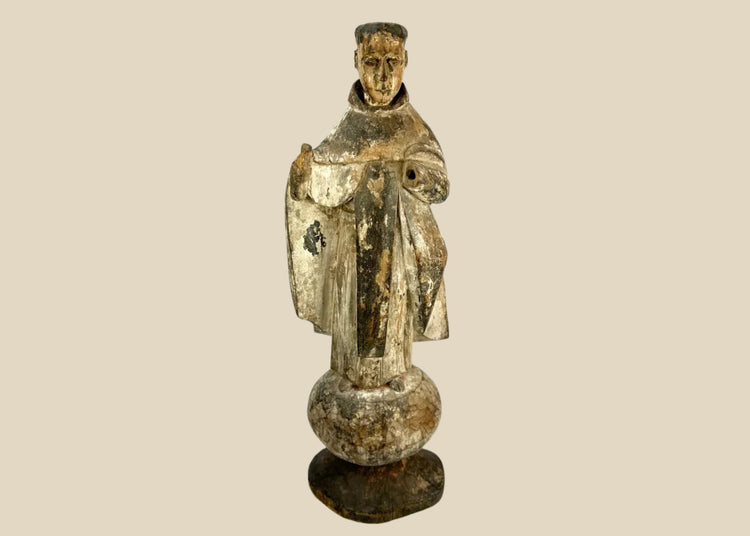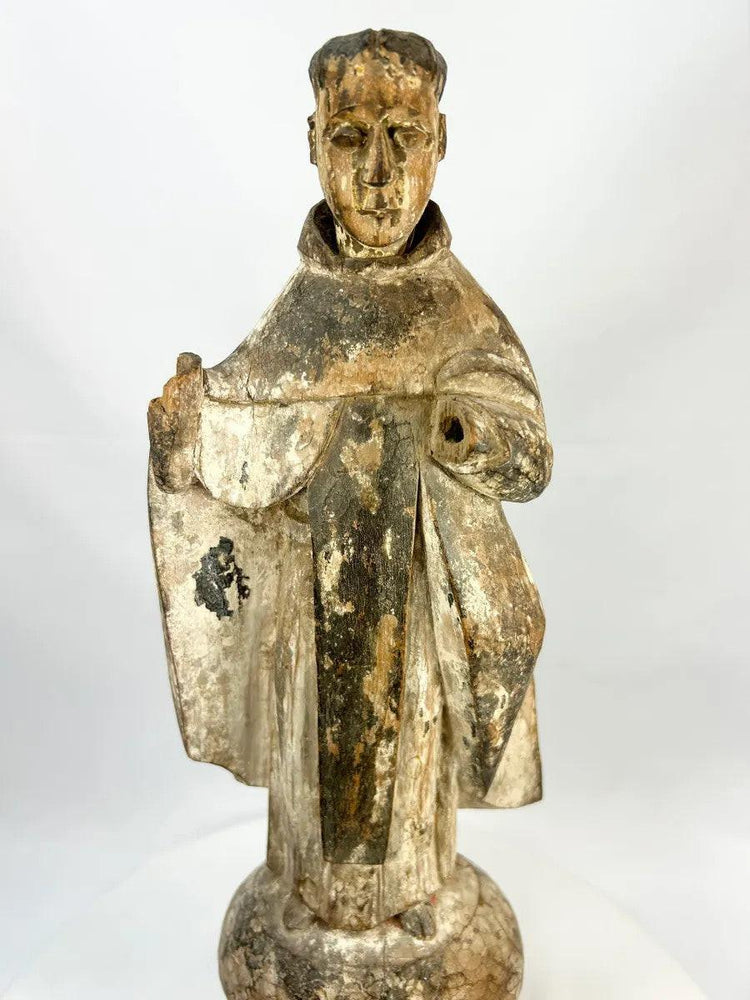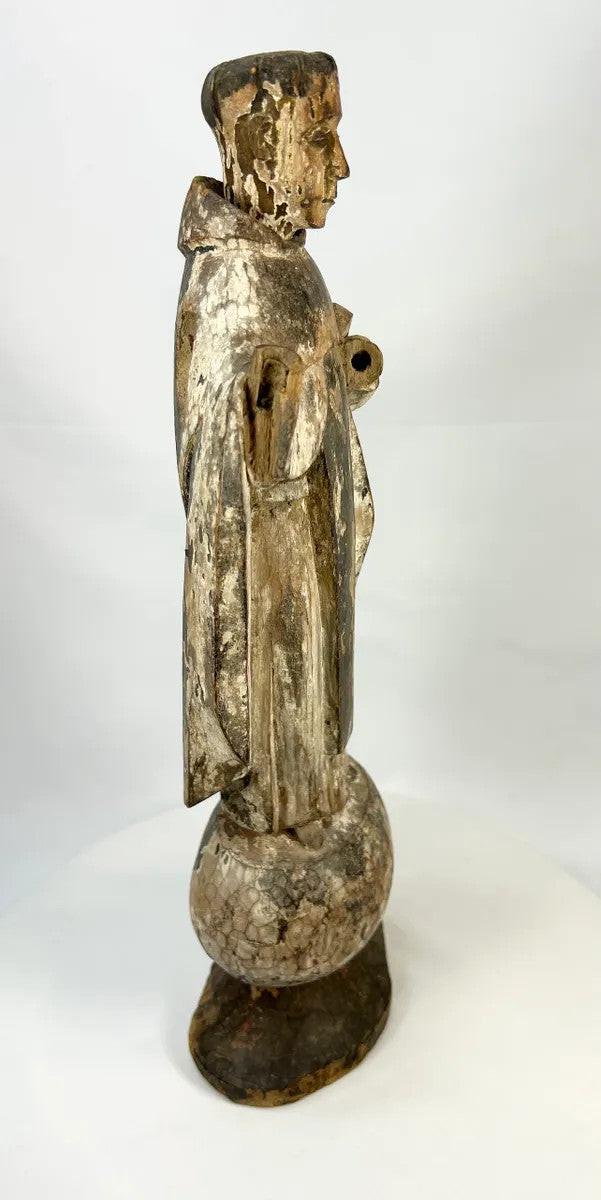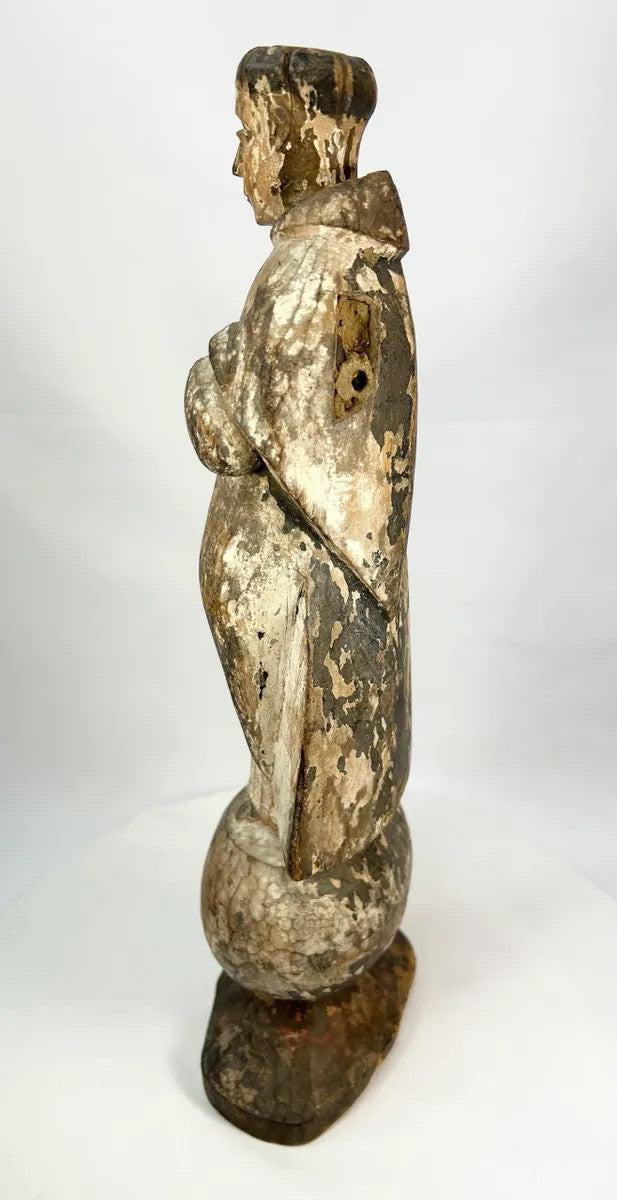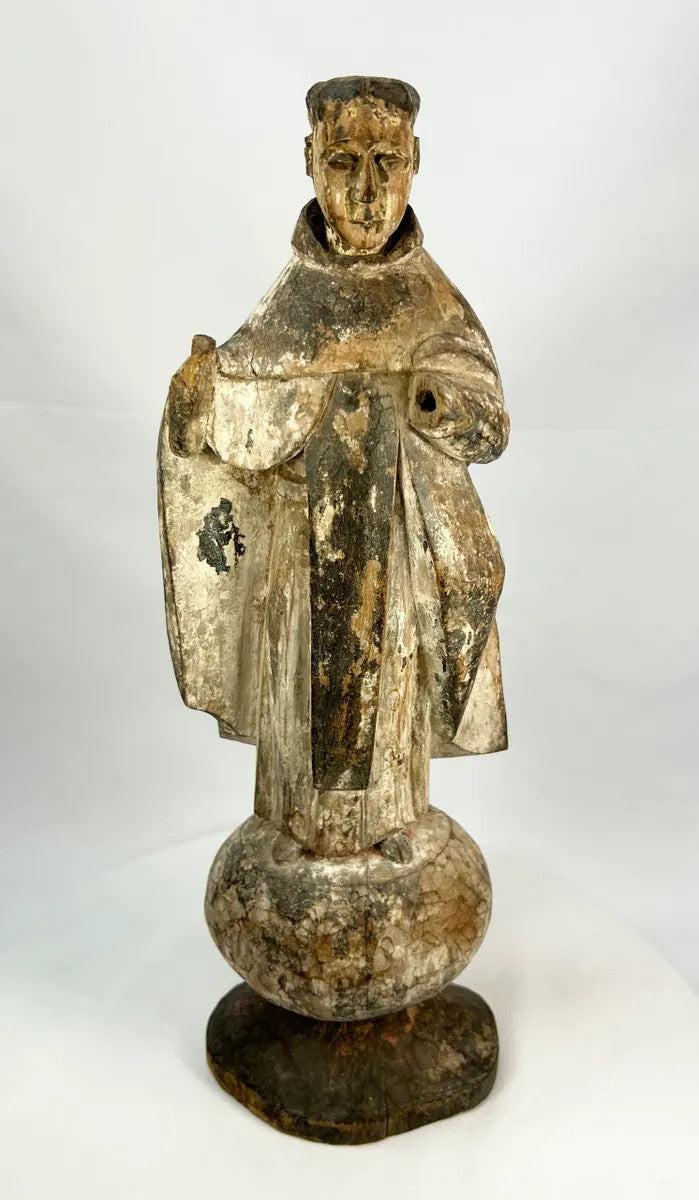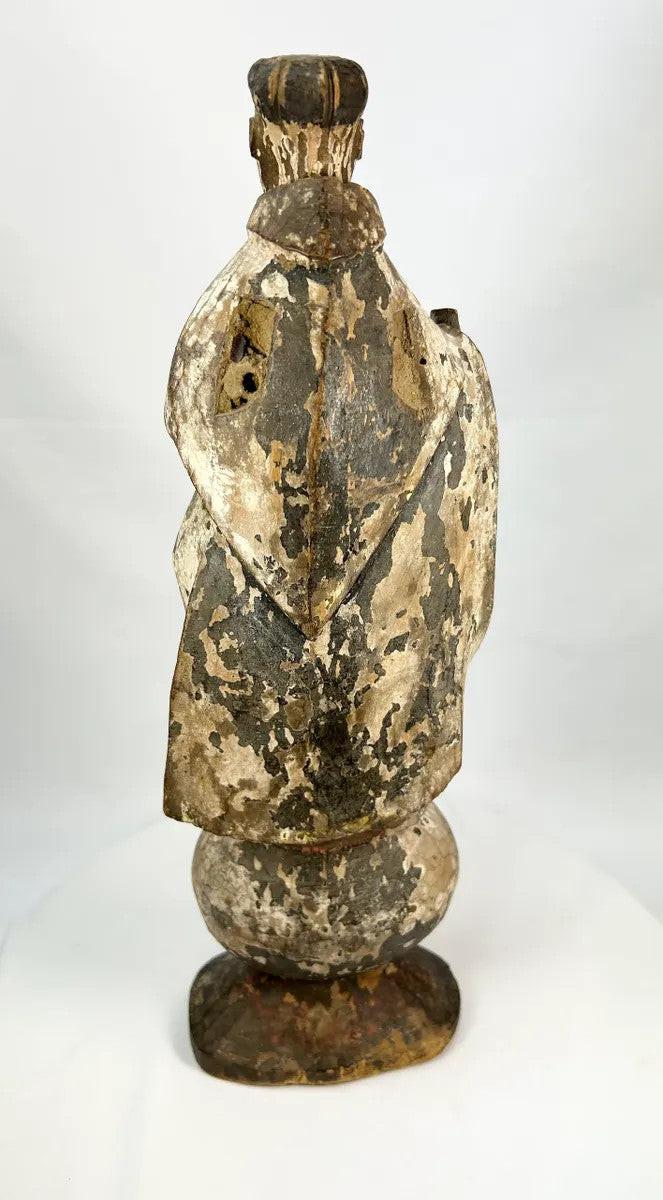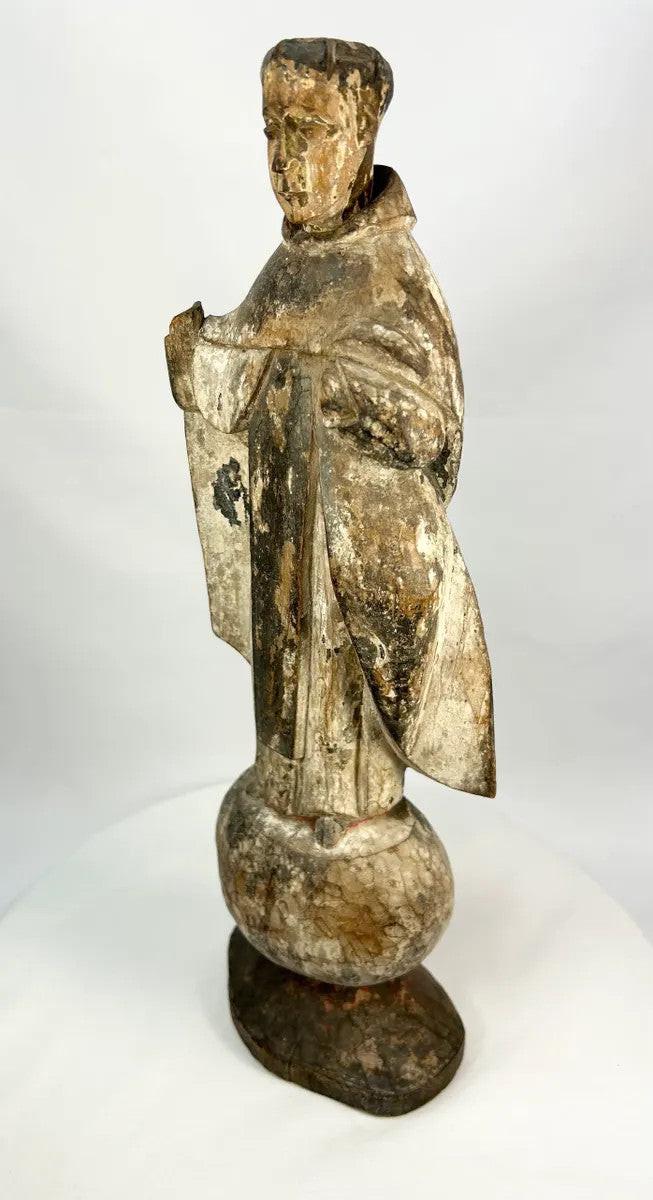Spanish Colonial Santo Figure | Carved Wooden Friar with Traces of Polychrome | 17th–18th Century
Description
More
Less
Historical Context & Origin
Region: Spanish Colonial Latin America (likely Mexico or Peru)
Material: Carved wood with traces of polychrome and gesso
Period: 17th–18th Century
Description
An antique Spanish Colonial santo figure, hand-carved from wood and depicting a friar or monk—likely Franciscan or Dominican—distinguished by the tonsured hair and simple robed attire. The figure stands frontally upon an integral rounded base, carved from the same block of wood, and would originally have held devotional attributes in the hands (now missing). Though fragmentary in surface finish, the worn polychrome and gesso remnants lend this santo a deep sense of age, character, and devotional history.
Features
- Hand-carved wooden santo with stylized features
- Representation of a friar or monk in traditional robe
- Original traces of polychrome and gesso finish
- Integral rounded base for altar or household display
- Spanish Colonial devotional folk art tradition
Cultural Significance
Santos were central to Catholic worship throughout colonial Latin America, produced by local artisans to embody saints, Christ, and the Virgin in both church and domestic settings. Figures such as this friar highlight the missionary role of mendicant orders, serving as tools of instruction, veneration, and cultural integration. Its humble form reflects both indigenous craftsmanship and colonial Catholic devotion.
Condition
Fair condition with age-consistent wear. Polychrome and gesso losses throughout; surface cracks and abrasions present on figure and base. Hands missing their original attributes. Stable and expressive overall, with rich patina reflecting centuries of use.
Dimensions (approximate)
Height: 16 in
Age
17th–18th Century
Description
Historical Context & Origin
Region: Spanish Colonial Latin America (likely Mexico or Peru)
Material: Carved wood with traces of polychrome and gesso
Period: 17th–18th Century
Description
An antique Spanish Colonial santo figure, hand-carved from wood and depicting a friar or monk—likely Franciscan or Dominican—distinguished by the tonsured hair and simple robed attire. The figure stands frontally upon an integral rounded base, carved from the same block of wood, and would originally have held devotional attributes in the hands (now missing). Though fragmentary in surface finish, the worn polychrome and gesso remnants lend this santo a deep sense of age, character, and devotional history.
Features
- Hand-carved wooden santo with stylized features
- Representation of a friar or monk in traditional robe
- Original traces of polychrome and gesso finish
- Integral rounded base for altar or household display
- Spanish Colonial devotional folk art tradition
Cultural Significance
Santos were central to Catholic worship throughout colonial Latin America, produced by local artisans to embody saints, Christ, and the Virgin in both church and domestic settings. Figures such as this friar highlight the missionary role of mendicant orders, serving as tools of instruction, veneration, and cultural integration. Its humble form reflects both indigenous craftsmanship and colonial Catholic devotion.
Condition
Fair condition with age-consistent wear. Polychrome and gesso losses throughout; surface cracks and abrasions present on figure and base. Hands missing their original attributes. Stable and expressive overall, with rich patina reflecting centuries of use.
Dimensions (approximate)
Height: 16 in
Age
17th–18th Century
You May Also Like
























